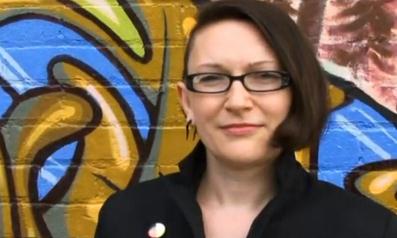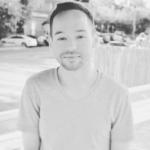In our community, gay and lesbian individuals sometimes forget there is a “B” in the blanket acronym used to describe queers. Many bisexuals say they are often marginalized by the notion that bisexuality doesn’t exist and is just a stopover on the route to gay-town.
With this in mind, the Risk and Resilience study has been launched by the Re:searching for LGBTQ Health team in conjunction with the Centre for Addiction and Mental Health (CAMH).
The goal of this community-based research is to uncover how prevalent issues such as depression, addiction and anxiety are in the bisexual community; look at what support services exist for bisexuals; and explore what types of discrimination those who love both genders experience.
The Risk and Resilience study was born from pilot research compiled by Dr Lori Ross’s Re:searching for LGBTQ Health team. Ross’s study conducted semi-structured focus groups with 55 bisexuals around Ontario and highlighted the impact biphobia and monosexism (the belief that someone can be attracted to only one gender) have on mental health.
Ross’s study found that in addition to discrimination, people who identify as bisexual report that they often receive sub-standard care from health-service providers and that they are constantly told they are not actually bisexual.
“Someone might go to a counsellor for depression and get told that if they accepted that they were really gay or lesbian, and not bisexual, then their depression would go away,” Dr Margaret Robinson, project manager of the Risk and Resilience study, says. “Family members didn’t always support bisexuality, even if they were gay-positive, and same-sex partners pressured us to identify as gay or lesbian.”
Robinson has helmed the Risk and Resilience project since 2010 and is bisexual herself. She says that people have accused her of being straight and pretending to be bisexual for attention.
“Having to fight constantly, just to be who you are, really wears you down,” she says.
Robinson brings years of queer experience to the project. She has previously facilitated the Bi Women of Toronto group and the Toronto Bisexual Network. In addition, she has coordinated the Dyke March and helped organize the ninth International BiCon, and she is a director of the Toronto Bisexuality Education Project.
“That experience helped me assemble a great advisory committee for this project. We’ve got 11 bisexuals from around Ontario whose experience and advice have guided the project through every stage,” she says.
One such member of the advisory committee is notable Ottawa drag performer Zelda Marshall. Marshall became involved with the Risk and Resilience study after completing and promoting the Trans Pulse Project survey and was then asked to join the advisory committee for the current study.
“When I am feeling particularly provocative, which is most of the time, I tell people in fact that I identify as a ‘GB’ — greedy bitch. Yes, I want it all, including the freedom to love either sex,” Marshall says with a laugh.
“Even today, I still have friends who swear me to secrecy when they come out to me as bi,” Marshall says. “Hopefully, this survey, and particularly awareness of the interest of the needs of bisexuals as being distinct from either heteros or homos, will reduce some of that stigma.”
Robinson admits that within the queer community a stigma exists against the CAMH. This negative opinion of her employer is something she says she frequently encounters when conversing with queers; however, the partnership with Re:searching has somewhat alleviated the presumption that the CAMH isn’t working for the benefit of the queer community.
“This isn’t a case of outsiders coming in with a bunch of questions,” she explains. “This is insider research done by bisexuals, for bisexuals.”
There are still plenty of spots available in the Risk and Resilience study; however, to be included, you must know someone who has already taken part. Through this respondent-driven sampling, participants of the study can recruit up to 10 other bisexuals to join the study.
“It’s like the shampoo commercial from the ’80s,” Robinson explains. “I told two friends, and they told two friends, and so on. By tracking these chains of recruitment, we can weigh the data to compensate for the non-random sample. So our results should be true for bisexuals in Ontario generally, not just those who did the survey.”
Robinson points out that bisexual people aren’t as socially networked as the transgender community, and the recruitment chain has been slow to take off. There are 900 tickets in circulation, and Robinson encourages bisexuals who do want to participate to tell their friends they would like a ticket.
“Many of the people who experience the negative effects of biphobia don’t identify as bisexual. So we’ve created a video to let pansexual, omnisexual, fluid, queer, questioning and unlabelled people know that if they’re attracted to more than one gender, they can participate as well.”


 Why you can trust Xtra
Why you can trust Xtra


